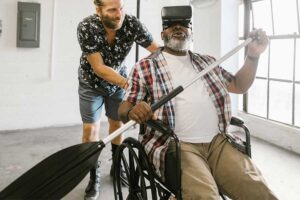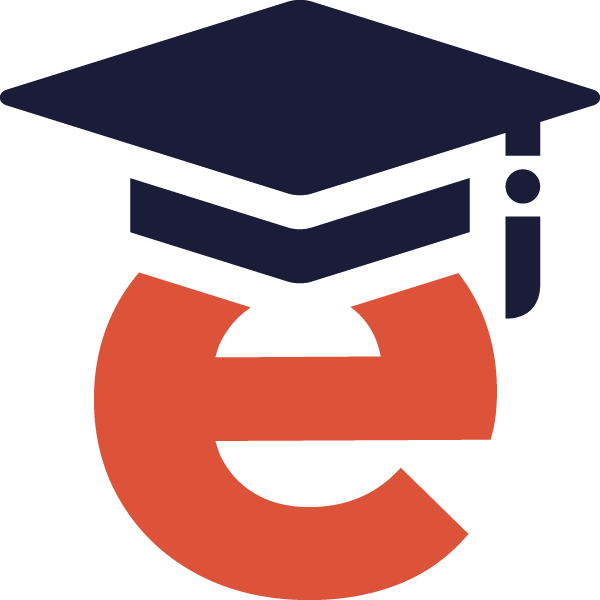VR and AR in Adult Learning: Exploring the Potential and Practical Applications
Written by Jeff Geronimo
Imagine attending an online anatomy and physiology course from the comfort of your living room. Picture diving into the human body, exploring and interacting with each organ while studying anatomy. These futuristic visions are today’s realities, thanks to the innovations in Augmented Reality (AR) and Virtual Reality (VR). Adult learning isn’t just about books and online courses anymore. Discover how these technologies are revolutionizing traditional teaching and training methods, amplifying engagement, and empowering learners with unprecedented experiences.
Virtual Reality (VR) and Augmented Reality (AR) are cutting-edge technologies that have gained a lot of attention in recent years in various industries. The AR market continues to grow rapidly, with an estimated market value of $50 billion by 2024. While they have been primarily used for entertainment, these immersive technologies have now found their way into the world of adult learning. Due to rapid technological advancement and increasing accessibility, VR and AR can transform traditional learning methods into engaging and interactive experiences.
 Understanding VR and AR Technologies
Understanding VR and AR Technologies
Virtual Reality (VR) refers to a computer-generated simulation that immerses an individual in a 3D environment through the use of specialized equipment such as headsets or goggles. This creates a sense of presence where users feel like they are fully immersed in the virtual world that they can interact with using controllers or hand gestures. Imagine wearing a headset and finding yourself in a completely different world, like being teleported to a tropical island or outer space. It’s a digital world, entirely detached from the real one.
Augmented Reality (AR), on the other hand, involves overlaying digital content onto real-world environments. It brings elements from the digital world into the physical world, enhancing the user’s perception and interaction with their surroundings. Unlike VR, which creates an entirely new environment, AR enhances what already exists by adding layers of information or visuals on top of it. Have you ever used Snapchat filters to put dog ears on your selfie? Or perhaps you played Pokémon Go? That’s AR, where digital elements augment your real-world view.
Understanding the Potential of VR and AR in Adult Learning
Over the past decade, both AR and VR have grown from mere entertainment novelties to game-changing educational tools. No longer confined to gaming parlors or tech expos, they’re now becoming classroom and industry staples, providing learners with immersive experiences that were once thought impossible. Let’s explore the potential of AR and VR in traditional education settings:
- Enhanced Engagement: AR and VR can make learning more engaging by transforming passive learning experiences into active and immersive ones. For example, history classes can transport students to significant historical events, allowing them to witness history unfold before their eyes. Students can take advantage of new apps like Kinfolk to immerse themselves in historical communities, gaining insights into the values and visions of often-overlooked figures from Black, Brown, Indigenous, and Queer history. This experience not only enhances understanding but also fosters empathy and a deeper connection with the subject matter.
- Simulated Experiments: In science and engineering education, VR can simulate experiments and scenarios that would be costly, dangerous, or otherwise impractical in the real world. Students can experiment with chemical reactions or explore the surface of Mars, all within a safe and controlled virtual environment.
- Personalized Learning: AR and VR can cater to individual learning styles and paces. Learners can choose their preferred learning environments, adjust difficulty levels, and receive instant feedback, leading to a more personalized learning experience.
- Accessibility and Inclusivity: AR and VR can provide accessible learning experiences for individuals with disabilities. For example, it can offer visually impaired students tactile and auditory cues, enabling them to interact with and understand complex concepts.
Practical Applications in Industry
AR and VR aren’t limited to traditional education settings; they also have practical applications in industry training. Consider the following examples:
- Workforce Training: Companies can use VR to simulate real workplace scenarios, allowing employees to practice tasks and problem-solving in a risk-free environment. This is particularly beneficial for jobs that involve high-risk activities.
- Medical Training: Medical professionals can use VR to practice surgeries, diagnose patients, and learn about rare medical conditions in a controlled setting. This enhances their skills and reduces the margin for error in real-life situations. In fact, a recent study from Harvard Business Review showed that VR training “improved participants’ overall surgical performance by 230% compared with traditional training methods.” The VR-trained participants could complete procedures on average 20% faster and more accurately.
- Soft Skills Development: VR can also be employed to develop soft skills such as communication, leadership, and teamwork. Employees can participate in virtual scenarios that mirror real-life interpersonal challenges.
Tips for Educators and Training Professionals
If you’re an educator or trainer eager to incorporate AR and VR into your curriculum or training program, here are a few tips to get you started:
- Determine the Learning Objectives: before incorporating AR or VR into any learning program, it’s essential to determine the desired learning outcomes. Identify the specific objectives or skills that learners should gain through this technology. This will help in selecting suitable simulations or scenarios that align with those objectives.
- Understand Your Audience: one crucial aspect of incorporating any new technology into adult learning is understanding your audience’s needs and preferences. Before introducing VR into your program, assess whether your learners are familiar with this technology or if they would need introductory sessions to understand how it works.
- Start Small: begin with accessible AR apps on smartphones or tablets. These offer interactive experiences without needing extensive setups.
- Choose an Appropriate VR Platform: if you plan to explore and try out VR experiences, various VR platforms are available today, each offering different features and capabilities. Some popular options include Google Cardboard, Samsung Gear VR, Oculus Rift, HTC Vive, and PlayStation VR. Carefully consider the needs of your learners before deciding on a platform, as some may require high-end equipment while others may be accessible through cheaper alternatives.
- Stay Updated: AR and VR are rapidly evolving. Attend workshops, webinars, or conferences to stay abreast of the latest advancements and best practices.
- Feedback is Golden: After each AR or VR session, gather feedback from learners. This can guide improvements and adaptations for future sessions.
- Safety First: Ensure that users are aware of their physical surroundings when using VR to prevent accidents.
The potential of AR and VR in adult learning is vast and transformative. These technologies can make education and training more engaging, immersive, and effective. Whether you’re an educator or a professional trainer, integrating AR and VR into your teaching toolkit can open new avenues for enhancing knowledge and skills. If you’re interested in building some of these rich and relevant learning experiences, we can help. At eLearningDOC, we can assist you in navigating the complexities and excitement around AR and VR and guide you in implementing these experiences in a meaningful and relevant way for your learners. Contact the DOC today to learn more!









